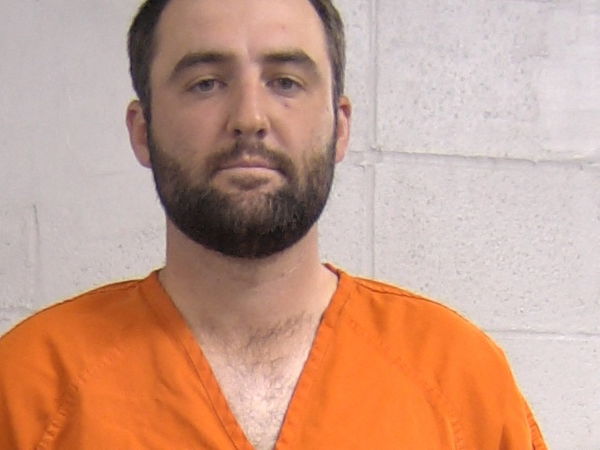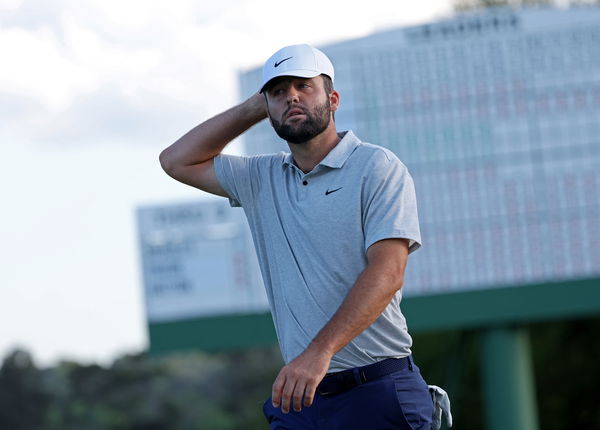PGA Tour Paved Path to Its Own Destruction; Stooping Relevancy Talks Millions in Truth

Follow Us

USA Today via Reuters
PGA, Golf Herren THE PLAYERS Championship – press conference, PK, Pressekonferenz March 13, 2020 Ponte Vedra Beach, Florida, USA PGA commissioner Jay Monahan speaks to media after the cancellation of the 2020 edition of The Players Championship golf tournament at TPC Sawgrass – Stadium Course. The tournament was cancelled at the conclusion of the first round due to the developing Coronavirus COVID-19 pandemic. Mandatory Credit: Adam Hagy-USA TODAY Sports, 13.03.2020 08:13:15, 14176856, NPStrans, PGA, TPC Sawgrass, The Players Championship, Jay Monahan, COVID-19, TopPic PUBLICATIONxINxGERxSUIxAUTxONLY Copyright: xAdamxHagyx 14176856
The ninth edition of ‘The Match’ lacked nothing on paper. After Grant Thornton, another mixed-gender event was on the cards. Max Homa was on a hot mic. Charles Barkley was in the booth. Rory McIlroy wrapped up nicely, raising $1.9 million for charity on the night. And yet, when it came to TV ratings, the exhibition event was no better than the PGA Tour’s regular events.
Per Sports Media Watch, it was the worst performer that week of the eight Nielsen-rated sports broadcasts. You don’t see Lexi Thompson fist-bumping PGA Tour Pros every other day. What explains the lack of viewership for a unique event like ‘The Match’? Is there a case to be made for reducing the number of regular events? Are there too many golf games on TV?
Rickie Fowler had a thought-provoking answer
ADVERTISEMENT
Article continues below this ad
Some players on the PGA Tour would prefer an off-season similar to football and soccer. Rickie Fowler, for one, believes that would create more appetite for the game. Currently, a golf tournament a week has sort of numbed the senses of fans, the American Pro feels.
This was Fowler at the Cognizant Classic Press conference: “Right now, you can basically watch golf every week of the year for the most part. There’s not really an off-season. I feel like with other sports, people can’t wait for football preseason to start up, and that’s just preseason. The games don’t really matter a whole lot.”
Trending

Scottie Scheffler Case: Controversial Update Against Arresting Officer Sparks Massive Outrage in Golf World
May 18, 2024 06:49 PM EDT

‘Rattled’ Scottie Scheffler Reveals Police Officer’s Unsettling Question That Left Him Speechless
May 17, 2024 10:07 PM EDT

Hours After Crucial Bodycam Report, Scottie Scheffler’s Arrest Case Takes a Riveting Turn
May 19, 2024 03:11 PM EDT

2024 Amundi German Masters: Prize Money Purse & Winner’s Payout Explored
May 19, 2024 03:05 AM EDT

PGA Tour Rumors: Unproven Scottie Scheffler Felony Charge Pushes Louisville Police Department in Hot Water
May 18, 2024 10:00 AM EDT
Get instantly notified of the hottest Golf stories via Google! Click on Follow Us and Tap the Blue Star.

Follow Us
Rickie Fowler says having a true "off-season" would create more demand for golf.
Do you agree? 🤔 pic.twitter.com/LhW83mPWxq
— Golf Digest (@GolfDigest) February 28, 2024
The 2022–23 schedule had 47 PGA Tour events. Last year, there were 44. This year, it has been further reduced to 36 regular events. But that’s perhaps still too many. Last year, Scottie Scheffler took a break after the Ryder Cup. He was, of course, one of the many top players missing from the greens since September.
Not surprising, considering the Tour Championship effectively was a wrap for the season. So, Fowler’s comments on the backdrop of this are not hard to understand. In fact, the idea was floated by Rory McIlroy two years ago.
Why did Rory McIlroy want fewer events?
Fowler was not on the same page with McIlroy on integrating LIV golfers to the Tour again. But perhaps McIlroy would be glad to know that American International shares the same vision regarding the number of events.
In October 2022, the four-time Major winner said, “I think we need to get to the place where it’s not oversaturated. I would love us to come back in January, and people will have missed watching competitive golf. I don’t think that happens right now because there’s 47 events a year.”
What McIlroy was getting at that time has become a reality two years later. With so many events with technically the same weightage, (500 FedEx Cup points), it has become increasingly difficult for casual fans to gauge the importance of different events. Fowler essentially voiced what McIlroy didn’t spell out.
NBC draws 1.8 million viewers for Jake Knapp's win in the Mexico Open on Sunday.
That's down 23% from 2.3 million for Tony Finau's win last year on CBS, which aired in late April.
Two years ago: 2.28 million for Jon Rahm. pic.twitter.com/KlYYveXfI5
— Josh Carpenter (@JoshACarpenter) February 27, 2024
“I feel like ultimately we’re in the entertainment business, and we’ve got to figure out a better way to entertain our fans, and it comes across better on TV.” While one part of that is definitely showing more golf rather than the barrage of commercials that take precedence now, the other is reducing the number of events, as Fowler pointed out. Interestingly, the six-time PGA Tour winner also hinted that more games mean the quality of the product is getting diluted. What has been the effect of that?
Should the PGA Tour follow a shorter schedule?
The debate about off-season gained momentum in the wake of LIV Golf. For better or worse, the PIF-funded league followed a 14-event calendar spread across the globe, culminating in the team championship in Miami. The PGA Tour is still following a 30+ event calendar. Some events invariably suffer from a lack of star power.
ADVERTISEMENT
Article continues below this ad
With Monahan’s growing demands for heftier purses, again thanks to LIV’s inception, sponsors were left in a lurch. A long schedule meant there wasn’t any guarantee that top players would land on the greens before the tee time. Honda was the first to opt out. Wells Fargo and Farmers Insurance soon followed.
ADVERTISEMENT
Article continues below this ad
A limited number of events would mean players would have a longer break between the tournaments, effectively increasing the chances of sponsors getting a better lineup to pull in more eyeballs. Currently, that is Jay Monahan’s main headache. Rickie Fowler, though, might have given Jay Monahan a long-term solution for a post-merger golf landscape.
ADVERTISEMENT
Edited by:

Sheldon Pereira
ADVERTISEMENT
ADVERTISEMENT



